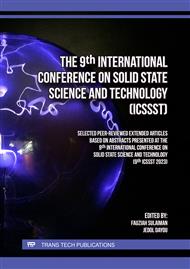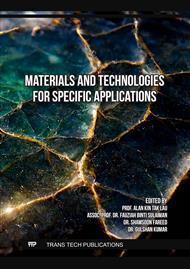p.25
p.35
p.47
p.59
p.67
p.73
p.87
p.97
p.103
Integrated Weighing System Using Load Cell and Ultrasonic Sensor: A Case Study at Negeri Roadstone Malaysia Quarry
Abstract:
In the challenging environment of the Negeri Roadstone Malaysia quarry, maintaining accuracy in the weight measurement of raw materials and finished products is paramount. This paper presents an in-depth analysis of an integrated weighing system comprising load cells and ultrasonic sensors, used strategically at the quarry site. By leveraging the precision of strain gauge technology inherent in load cells and the distance-measuring capabilities of ultrasonic sensors, the system aims to offer accurate weight estimations across varying distributions of materials, mainly sand. The load cell yields an average weight of 703.8192g, 701.8220g and 702.4949g which is very close to the actual weight of the sand (700g). Experimental results highlight the sensitivity of ultrasonic measurements to the distribution pattern of sand, emphasising the importance of material consistency for accurate volume-to-weight conversions. Furthermore, integrating the Node-RED platform showcases real-time data visualisation, enhancing the system's usability and data analysis capabilities. Through this study, we underscore the potential and challenges of employing a hybrid weighing system, offering insights for future implementations in similar industrial settings.
Info:
Periodical:
Pages:
103-109
Citation:
Online since:
March 2025
Authors:
Keywords:
Price:
Сopyright:
© 2025 Trans Tech Publications Ltd. All Rights Reserved
Share:
Citation:



